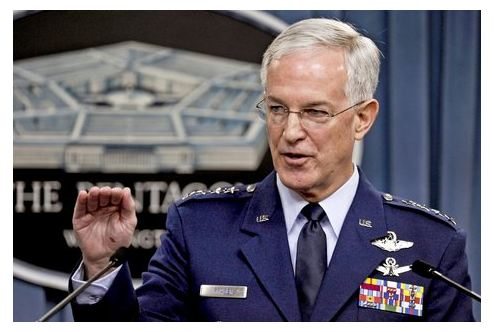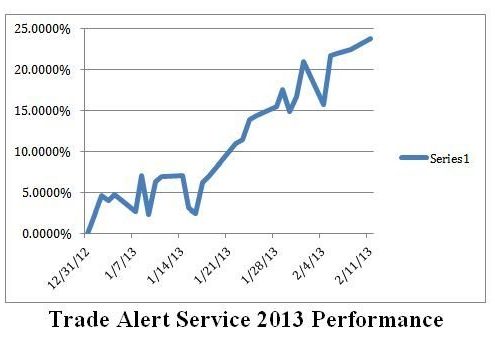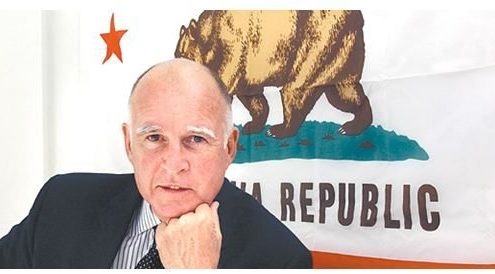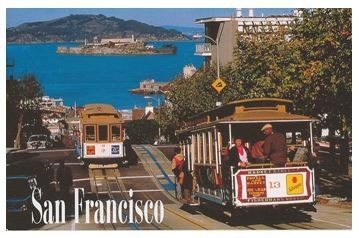
I never cease to be amazed by the intelligence provided me by the US Defense Department, which after the CIA, has the world?s most impressive and insightful economic research team. There are few places a global strategist like me can go to get intelligent, thoughtful forty-year views, and this is one. Wall Street, eat your heart out.
Of course, they are planning how to commit ever declining resources in future military conflicts. I am just looking for great trading ideas for my readers, which my assorted three-star and four-star friends have in abundance. I usually have to provide some extra analysis and tweak the data a bit to obtain the precise ticker symbols and entry points, but then that?s what you pay me to do.
An evening with General Douglas Fraser did not disappoint. He is an Air Force four-star who is the commander of US Southern Command (SOUTHCOM), one of nine unified Combatant Commands in the Department of Defense. Its area of responsibility encompasses Central America, South America, and the Caribbean. SOUTHCOM is a joint command comprised of more than 1,200 military and civilian personnel representing the Army, Navy, Air Force, Marine Corps, Coast Guard, and other federal agencies.
The United States is now the second largest Hispanic country in the world, and it will soon become the largest. These industrious people now account for 15% of US GDP, and that figure will grow to 35% by 2050. The Hispanic birthrate in many parts of the US is triple that of any other ethnic group. Because of this, any politicians that pursue anti-immigrant policies are doomed to failure. This may, in part, explain the November election result.
Latin America?s GDP is growing at 4% a year, more than double the current US rate. American trade with the region grew by 72% last year, with imports surging an eye popping 112%. It is the source of one third of our foreign energy supplies. It has tremendous wealth in copper, iron ore, and food production that have yet to be exploited. In the last decade, 40 million have risen out of poverty. Yet 13% of the inhabitants earn less than $1 a day.
This poverty has made Latin America fertile ground for the international drug trade, which poses one of the greatest threats to America?s security today.? Profits from the cocaine trade reached $88 billion in 2011, which is more than the GDP of any single Central American country. Some $33 billion worth of this narcotic made it into the US last year. Brazil is the world?s second biggest consumer of cocaine, after the US, with the UK the largest per capita consumer. The farther you move this product from the source, the more expensive it gets. Cocaine costs $2,000 a kilo in Brazil, $40,000 in the US, $80,000 in Europe, and $150,000 in the Middle East.
Technology has made communications, organization and logistics tools once only found in the military available to anyone. This creates a level playing field for international crime organizations of all sorts. The drug business is so profitable that the cartels are now building submarines in the jungles of Columbia at a cost of $4 million each, and sending them under water to the US to make a $100 million profit per voyage.
This illicit wealth is financing the growth of other illegal activities, like money laundering, arms dealing, human trafficking, and even the transportation of exotic animals. This is corrupting the smaller and weaker governments. Key transit point, Honduras, bas become so violent, with the highest murder rates in the world that the US recently had to withdraw 150 Peace Corps volunteers.
As a result, Fraser has had to modify the mission of SOUTHCOM from a primarily military one to non-traditional crime fighting. His planes are intercepting smugglers at the favored Venezuela-Honduras-US air corridor, as well as craft making it up the Central American west coast.? He is providing military assistance, training, and joint operations where he can, but must balance this with the human rights record in each country.
In addition to his other responsibilities, General Fraser is also keeping close track of China?s rapidly expanding trade relations in the area. They have begun selling inexpensive, low end weapons and military equipment to some of these countries.
The investment opportunities I picked up from General Fraser were legion. It certainly made the ETF?s for Brazil (EWZ), Chile (ECH), and Columbia (GXG) no brainers for a long term portfolio. The Brazilian Real and the Chilean peso are screamers. Copper (CU) and the grains, (CORN), (SOYB), and (WEAT), are probably also good bets.
General Fraser graduated from the Air Force Academy in 1974 and is fluent in Spanish. He has commanded Air Force combat units in Japan, Korea, and Germany. He was later a senior officer in the Space Operations Command. General Fraser joined SOUTHCOM in 2009 after serving as deputy commander of the Pacific Command.
After his briefing, the readers of the Diary of a Mad Hedge Fund Trader who came at my invitation that evening were given the opportunity to ask questions of one of America?s most senior military officers on a one on one basis. In a lighthearted moment, I mentioned to the General that his career total of 2,800 flight hours exceeding my own by only 600 hours. But his rides were vastly more exciting than mine, with most of his time spent in F-16?s and F-15-s, some of the most lethal weapons ever developed.? My log contains an assortment of aircraft that include a lot of more sedentary Cessna?s, a few C-130 Hercules, a P51 Mustang, a De Havilland Tiger Moth, and a few precious hours in a Russian Mig-25 and Mig-29.
Global Market Comments
February 13, 2013
Fiat Lux
Featured Trade:
(THE MUNI BOND MYTH),
(MUB), (TLT), (JNK), (ACTHX),
(BEWARE THE COMING EQUITY CAPITAL FAMINE)
iShares S&P National AMT-Free Muni Bd (MUB)
iShares Barclays 20+ Year Treas Bond (TLT)
SPDR Barclays High Yield Bond (JNK)
Invesco High Yield Muni A (ACTHX)
The world is about to suffer an acute shortage of equity capital over the next eight years, which could total $12.3 trillion. That is the conclusion of the McKinsey Global Institute, an affiliate of McKinsey &Co., a great well of long-term economic thinking which I have been drawing from for the last 40 years.
The cause of the coming debacle is quite simple. Investable assets in the emerging world with minimal experience in equity investment are growing four times faster than those in the developed world. While developed countries own 80% of the world?s $196 trillion in assets today, that share is expected to decline to 64% by 2020. This means that, by far, the greatest growth in assets will be in countries where managers have the least experience in equity investment.
The reasons for the waning interest in equities in the West are well known. For a start, the performance of developed stock markets has been terrible, with one ?lost decade? behind us, and another ahead. Aging populations wind down equity investment as they get older, shifting an ever-larger share of their assets into bonds and cash. The rise of defined contribution plans shifts a greater focus on fixed income investments. More money is going into hedge funds and private equities. The regulatory burden of Dodd-Frank is scaring many banks out of stock brokerage into safer managed alternatives. When stocks aren?t being ?sold?, no one buys them.
Anyone who has ever tried to sell equities to emerging market investors, like myself, can tell you the challenges they run up against. Much of the region?s assets are controlled by quasi-government institutions with a much greater debt orientation. Equity issuance is very expensive and tightly regulated. Corporate transparency and government oversight is a joke. No one believes the figures that are coming out of China.
Minority shareholders have no say and few rights, with annual meetings often over in an hour. There also is a long cultural tradition of keeping your wealth tied up in gold and silver instead of paper assets. No surprise then, that most emerging market investors view equities as riskier and more speculative than they are in the West and would rather keep their money elsewhere.
A shortage of equity capital is likely to make stock markets even less attractive than they recently have been. It will force companies to use more leverage, which will create greater volatility in earnings and share prices. A smaller equity cushion will lead to a higher frequency of bankruptcies during hard times. High growth companies, such as in technology, will have a particularly tough time raising capital, and IPO markets could dry up from the lack of money.
The net result of these anti-equity trends is that yields will have to rise substantially to become more competitive with bonds. Companies can achieve this by either raising dividends or watching share prices fall. This may be the reason behind soaring dividend yields globally over the last three years. The price of admission for equity capital hungry corporations is going up, big time. The $100 billion plus equity requirements of troubled European banks only exacerbate this situation.
The only way around this crisis is for investment banks to greatly step up their marketing efforts in the emerging markets, especially in China. The Middle Kingdom?s investable assets are expected to soar 328% from $19.8 trillion to $65 trillion by 2020. That will make it one of the world?s largest markets for investment products in a very short time. Major firms, like Morgan Stanley, Goldman Sachs, JP Morgan, Sogen, and UBS have already made massive investments in the region to boost business there.
To read the McKinsey piece in full, please click here. Better start learning Mandarin if you want to stay in the brokerage business.
What! No Equity Takers in Asia?
Global Market Comments
February 12, 2013
Fiat Lux
Featured Trade:
(TRADE ALERT SERVICE POSTS NEW ALL TIME HIGH),
(SPY), (IWM), (FCX), (AIG), (FXY), (YCS),
(DON?T GET CAUGHT IN THE NEXT REAL ESTATE BUBBLE),
(PHM), (LEN), (KBH)
(WHY WATER WILL SOON BECOME MORE VALUABLE THAN OIL), (CGW), (PHO), (FIW), (VE), (TTEK), (PNR),
(TESTIMONIAL)
SPDR S&P 500 (SPY)
iShares Russell 2000 Index (IWM)
Freeport-McMoRan Copper & Gold Inc. (FCX)
American International Group, Inc. (AIG)
CurrencyShares Japanese Yen Trust (FXY)
ProShares UltraShort Yen (YCS)
PulteGroup, Inc. (PHM)
Lennar Corp. (LEN)
KB Home (KBH)
Guggenheim S&P Global Water Index (CGW)
PowerShares Water Resources (PHO)
First Trust ISE Water Idx (FIW)
Veolia Environnement S.A. (VE)
Tetra Tech Inc. (TTEK)
Pentair Ltd. (PNR)
The Trade Alert Service of the Mad Hedge Fund Trader has posted a 23.76% profit year to date, taking it to another new all time high. The 26-month total return has punched through to an awesome 78.81%, compared to a miserable 14% return for the Dow average during the same period. That raises the average annualized return for the service to 36.4%, elevating it to the pinnacle of hedge fund ranks.
My bet that the stock markets would move sideways to up small has paid off big time, as I continued to run sizeable long positions in the S&P 500 and the Russell 2000 (IWM). My substantial short volatility positions are contributing to profits daily. I booked nice profits from holdings in American International Group (AIG) and copper producer, Freeport McMoRan (FCX). I also prudently doubled up my short positions in the Japanese yen.
Is has truly been a month where everything is working. Even my short positions in deep out of the money calls on the (SPY) are breaking. While the (SPY) has been going up, it has not been appreciating fast enough to hurt the position. All told, the last 18 consecutive recommendations of the Trade Alert Service have been profitable. I have eight trades to go to beat this record.
Global Trading Dispatch, my highly innovative and successful trade-mentoring program, earned a net return for readers of 40.17% in 2011 and 14.87% in 2012. The service includes my Trade Alert Service, daily newsletter, real-time trading portfolio, an enormous trading idea database, and live biweekly strategy webinars. To subscribe, please go to my website at www.madhedgefundtrader.com, find the ?Global Trading Dispatch? box on the right, and click on the lime green ?SUBSCRIBE NOW? button.
If you think that the upcoming energy shortage is going to be bad, it will pale in comparison to the next water crisis. So investment in fresh water infrastructure is going to be a great recurring long-term investment theme. One theory about the endless wars in the Middle East since 1918 is that they have really been over water rights.
Although Earth is often referred to as the water planet, only 2.5% is fresh, and three quarters of that is locked up in ice at the North and South poles. In places like China, with a quarter of the world's population, up to 90% of the fresh water is already polluted, some irretrievably so. Some 18% of the world population lacks access to potable water, and demand is expected to rise by 40% in the next 20 years.
Aquifers in the US, which took nature millennia to create, are approaching exhaustion. While membrane osmosis technologies exist to convert sea water into fresh, they use ten times more energy than current treatment processes, a real problem if you don't have any, and will easily double the end cost of water to consumers. While it may take 16 pounds of grain to produce a pound of beef, it takes a staggering 2,416 gallons of water to do the same. Beef exports are really a way of shipping water abroad in concentrated form.
The UN says that $11 billion a year is needed for water infrastructure investment and $15 billion of the 2008 US stimulus package was similarly spent. It says a lot that when I went to the University of California at Berkeley School of Engineering to research this piece, most of the experts in the field had already been retained by major hedge funds!
At the top of the shopping list to participate here should be the Claymore S&P Global Water Index ETF (CGW), which has appreciated by 14% since the October low. You can also visit the PowerShares Water Resource Portfolio (PHO), the First Trust ISE Water Index Fund (FIW), or the individual stocks Veolia Environment (VE), Tetra-Tech (TTEK), and Pentair (PNR). Who has the world's greatest per capita water resources? Siberia, which could become a major exporter of H2O to China in the decades to come.
Global Market Comments
February 11, 2013
Fiat Lux
Featured Trade:
(IS IT TIME TO BUY TECHNOLOGY STOCKS), (AAPL), (MSFT), (GOOG), (QQQ), (BAC), (JPM), (XOM), (CAT), (PG), (NFLX),
(AN AFTERNOON WITH CALIFORNIA GOVERNOR JERRY BROWN)
Apple Inc. (AAPL)
Microsoft Corporation (MSFT)
Google Inc. (GOOG)
PowerShares QQQ (QQQ)
Bank of America Corporation (BAC)
JPMorgan Chase & Co. (JPM)
Exxon Mobil Corporation (XOM)
Caterpillar Inc. (CAT)
Procter & Gamble Co. (PG)
Netflix, Inc. (NFLX)
On my last trip to my lakefront estate at Lake Tahoe, I stopped off at the state capital, Sacramento, to look in on my old friend, Governor Jerry Brown. It is crucial that readers across the country, and indeed, around the world, know what Jerry is thinking. California has always been a ?pathfinder? state, and what starts here is often adopted across the country. This little chat could be a hint of what?s headed your way.
As I bounded up the steps of the marble capitol building, the first thing I noticed was the absence of the previous governor, Arnold Schwarzenegger?s, smoking tent. The governator had it erected on the lawn so he could enjoy long puffs on his stogies and not be in violation of the state ban on indoor smoking. This was in the state that invented the anti-smoking movement.
I have trod a very long path with Jerry Brown. His dad, then Governor Pat Brown, ordered teargas dropped on me from a helicopter while I was at a Berkeley anti-war march nearly half a century ago. He was Secretary of State while I attended the University of California, often going head to head against then governor Ronald Reagan.
I was in Asia during his first two terms as governor from 1975-83, when his girlfriend, Linda Ronstadt, called him the ?moonbeam governor?, a nickname he has yet to live down. Warning: don?t call him that to his face.
I ran into him at the Democratic convention in New York in 1980 when he mounted his second run for the presidency. After he retired and was considered a political has-been, I bumped into Jerry once again when he studied Zen Buddhism in Japan.
In 1999, he was elected mayor of Oakland, a mostly black Bay Area slum near bankruptcy, which many considered ungovernable. He did a spectacular job, fighting corruption, rebuilding the school system, and sparking an economic renaissance. It was like he had nothing left to lose.
To the amazement of many, Jerry ran and won a third term as governor in 2011, taking over the wreckage left by the disastrous reign of Arnold Schwarzenegger. He has been raising eyebrows nationally ever since.
He immediately launched a crash campaign to raise taxes and cut spending. His Proposition 30 succeeded at the polls, raising sales taxes for everyone and boosting income taxes on those earning more than $500,000. The Golden State now has the highest combined federal and state taxes in the country, at 51.5%. The proceeds of the tax hike are solely dedicated to increasing $6 billion in spending on education.
State leaders learned a long time ago that people will pay a premium to live here. They pay double for housing, so why not double taxes? The sunshine has value. As I explain to guests at my strategy luncheons, high earners don?t mind paying an extra dollar in tax when it means they can make and extra $10, or $100, in profits. That has been the case with a technology industry here that has been booming almost non-stop since WWII.
Brown originally studied at a seminary school to become a catholic priest. To this day, he frequently quotes from the Bible, and he gave my Latin a real workout. Citing Luke, Chapter 12, verse 48 with regards to the sharing of the tax burden, ?to those who are given much, much is required.? The seven-year sunset provision for the new income tax also comes from the ?seven years of plenty?, found in the Old Testament.
He argues that this is only fair, since the top 1% of state earners have seen their income increase by 165% since 1980, while the bottom 80% have seen an 8% drop. The top 1% took 10% of state incomes in the seventies. Now it is 22%.
To say Jerry is iconoclastic is a disservice to the word. He is a combative 75 year old who says what he thinks at the drop of a hat, no matter whom it offends, be they friend or foe. He is a mix that is all too rare in this country, a flaming liberal on social issues, while an ironclad conservative on fiscal matters.
He is a staunch advocate for the environment. He appointed the first gay judge in the US. He is about to deliver the toughest anti-gun legislation in the country. He has been a lifelong cheerleader for the alternative energy industry.
Brown has also completed the most ambitious cuts in social spending in the state?s history, including grants for the disabled, child welfare, and Medical. Some 40,000 non-violent inmates were released from prisons into probation to save money. The University of California saw its budget cut by a massive 25%. State employment was chopped by 50,000, and some 50 redundant state boards were eliminated.
Jerry told me that the state?s problems were caused by two bubbles; the Internet one in 2000, and the indiscriminate mortgage lending that followed. That created a budget deficit that ballooned to $27 billion by the time he returned to office, which cut the California?s credit rating to the lowest of the 50 states. In a short 18 months, Brown balanced the budget, and state debt is now rapidly seeing upgrades, reducing borrowing costs.
The governor says that the spending cuts have been very tough to swallow. Even the carpet in his office is falling apart, and he confesses to eating day old tuna sandwiches. On the tax front, he says that ?when you have more in the cookie jar, you have more cookies to give.?
Jerry says his goals as governor were threefold. He eliminated false accounting gimmicks, which shuffled the state?s financial problems under the carpet, where they festered. He only implemented new taxes if people voted for them. And he returned decision making to cities and counties on schools, because the entities closest to problems have best ability to solve them, a policy he calls ?realignment?. Decentralization and devolution of power to local authorities isn?t something you hear about from liberals very often.
He points out that the big growth in state spending didn?t arise from some idealistic social agenda. Three strikes law mandating extremely long sentences caused an explosive growth of the prison system, which expanded from 3% to 11.5% of the state budget since the seventies. ?An aging population is also prompting a substantial increase in medical spending. These two items alone account for the entire increase in state spending for the past 40 years on a GDP adjusted basis.
I asked Jerry what he thought about the efforts by other tax-free states, particularly Texas, to lure business away. He erupted into a tirade. He argued passionately there was absolutely no evidence that people moved to avoid taxes, which amount to only a few thousand dollars a year for millionaires.
The economy here is booming. The best and the brightest minds in the world are pouring into the most creative and innovative place on the planet. There have been 300,000 private sector jobs created during his current tenure. Exports are up 17%. The state draws 50% of global venture capital investment, and files for four times more patents than runner up New York. The one-ton truck now driving around Mars was built in Pasadena.
My obvious last question had to be ?what?s next? for the energetic governor. Might his tax raising, spending cutting habits have a national audience? ?Do I have more offices in mind? I?m not telling,? he answered, with a twinkle in his eye. That is a lot to say for someone who has already held every high office in his home state.
I got a call from my car telling me it was time to get moving if we were going to make it over Donner Pass before it iced up. I said, ?see you next time? to Jerry. There always seems to be a next time with Jerry.
?What a Long, Strange Trip It?s Been.?
Global Market Comments
February 8, 2013
Fiat Lux
Featured Trade:
(HOW THIS MARKET WILL DIE),
(SPY), (SPX), (DOW AVERAGE), (AAPL), (QQQ),
(APRIL 12 SAN FRANCISCO STRATEGY LUNCHEON),
(THE CRUEL TRUTH ABOUT GOVERNMENT STATISTICS),
(TESTIMONIAL)
SPDR S&P 500
S&P Large Cap Index
Apple
Power Shares QQQ
Come join me for lunch at the Mad Hedge Fund Trader?s Global Strategy Update, which I will be conducting in San Francisco on Friday, April 12, 2013. An excellent meal will be followed by a wide-ranging discussion and an extended question and answer period.
I?ll be giving you my up to date view on stocks, bonds, currencies, commodities, precious metals, and real estate. And to keep you in suspense, I?ll be throwing a few surprises out there too. Tickets are available for $189.
I?ll be arriving at 11:00 and leaving late in case anyone wants to have a one on one discussion, or just sit around and chew the fat about the financial markets.
The lunch will be held at a private club in downtown San Francisco near Union Square that will be emailed with your purchase confirmation.
I look forward to meeting you, and thank you for supporting my research. To purchase tickets for the luncheons, please go to my online store at http://madhedgefundradio.com/store and click on ?luncheons.?





















